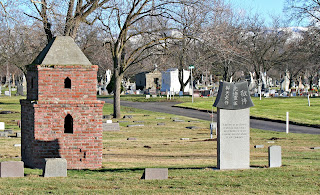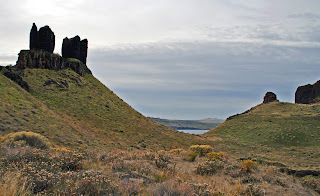 |
| Frenchtown Historic Site © Diane B. Reed |
The Walla Walla Valley's diverse heritage is, at first, not that apparent. Yet from its earliest history a succession of peoples have made the valley home. When the first explorers came here they found the Cayuse and Walla Walla tribes enjoying the abundance of the valley. The first cabin was built in "Frenchtown" (west of Walla Walla) around 1823-24. The rich history of that area is commemorated at the newly-opened Frenchtown Historic Site on old Route 12 west of the Whitman Mission.
 |
| Mountain View Cemetery in Walla Walla reflects the ethnic diversity of the area © Diane B. Reed |
The diversity of our area — English, Irish, Scots, Chinese, Japanese, Germans, Irish, Russians, and many more — is evident in Mountain View Cemetery. The cemetery, established in 1853, features tree-lined avenues lined with fascinating monuments and headstones. Some are simple, others elaborate. There are sections devoted to ethnic groups, fraternal organizations, and military burials.
 |
| Chinese section, Mountain View Cemetery © Diane B. Reed |
Courses on Walla Walla history have been offered through the Quest program at Walla Walla Community College. There are several being offered, one beginning in April on Walla Walla architecture, and one in May on Walla Walla history.





